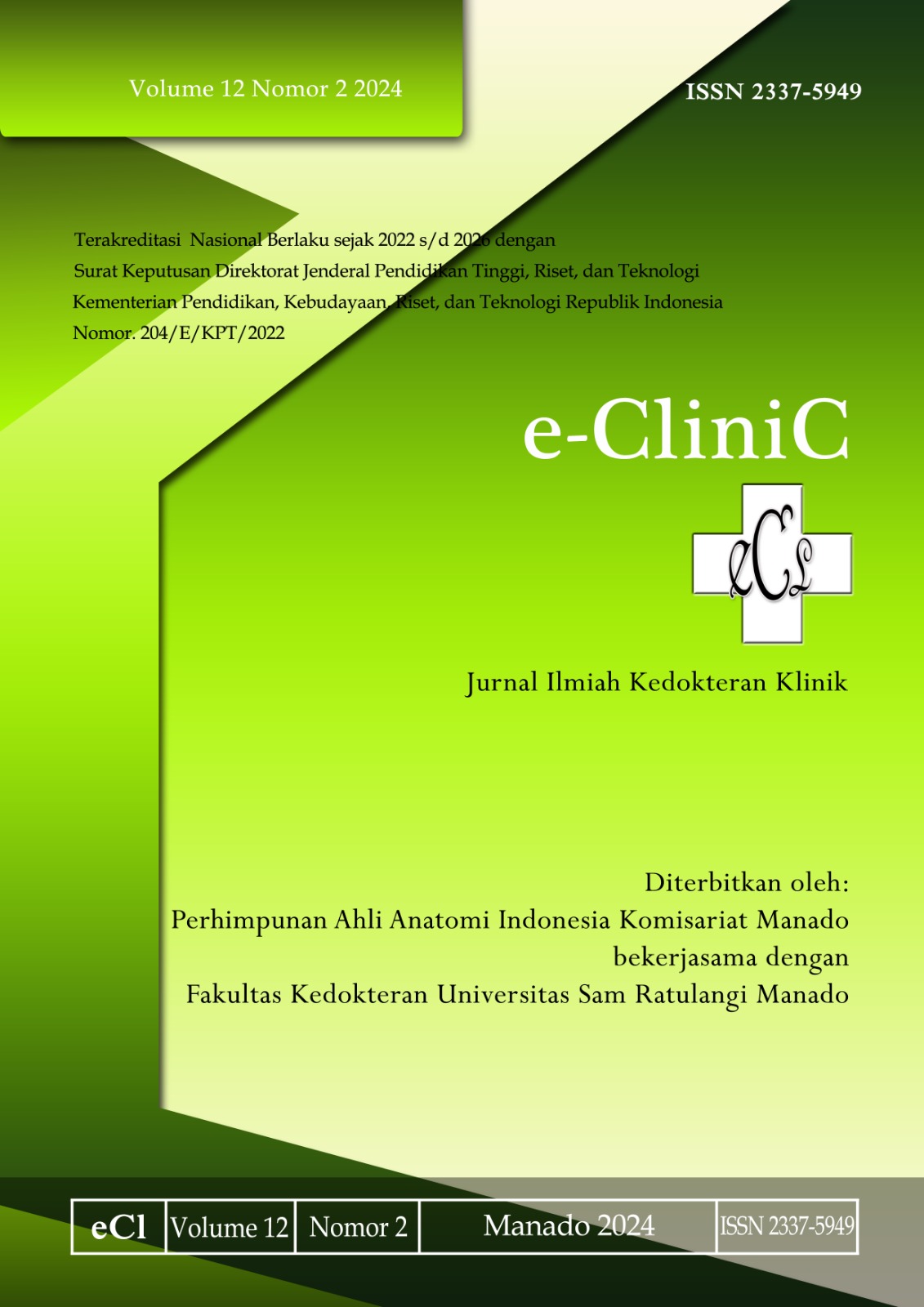Medical Rehabilitation in Patient with Cerebral Palsy Spastic Diplegic GMFCS IV MACS I CFCS IV EDACS II
DOI:
https://doi.org/10.35790/ecl.v12i2.46884Abstract
Abstract: Children with cerebral palsy are present with three types of motor problems. The major disturbances in muscle tone, balance, strength, and selectivity are directly related to damage of the central nervous system. Treatment programs encompass physical and behavioral therapy, pharmacologic and surgical treatments, mechanical aids, and management of associated medical conditions. In physical, occupational, speech, and behavioral therapies, the goals include enhancing patient and caregiver interactions while providing family support. We reported a female, 7-year-old, with cerebral palsy spastic diplegic GMFCS IV MACS I CFCS IV EDACS II. The patient was treated with USD intensity 1 watt/cm2, frequency 3.3 MHz in 5 minutes and continuous stretching in four extremity for 10 minutes each. It showed improvement from the popliteal angle assessment and MAS score, therefore, additional invasive therapy, such as botox injection, might be not needed in the meantime. Stiffness in lower extremities especially at gastrocnemius muscle was treated with ESWT energy of 0.15mJ/mm2; total shots dose 1500 shocks per each treated muscle (gastrocnemius); frequency 4 Hz. The patient presented with lumbar hyperlordotic and anterior pelvic tilt, and also tended to sway posteriorly during standing and walking, resulting poor protection reaction on the anterior side. It will be beneficial to add abdominal core and hip extensor strengthening exercise into the program. For walking aids, we considered about using anterior walker or posterior walker. However, since the patient was 4 years old and could not take complex instruction, it might become challenging to modify the exercise protocol. Regular daily stretching was beneficial for the home program and should be continued. Referral to surgery was not required at this moment due to no joint contracture.
Keywords: cerebral palsy; motor problem; gait rehabilitation
References
Wahyuni LK, Hamzah Z, Ugahary M. Palsi Serebral. In: Ilmu Kedokteran Fisik & Rehabilitasi pada Anak. PB PERDOSRI; 2014. p. 329–403.
Himmelmann K, Hagberg G, Uvebrant P. The changing panorama of cerebral palsy in Sweden. X. Prevalence and origin in the birth-year period 1999-2002: Cerebral palsy epidemiology, Sweden Acta Paediatr. 2010;99(9):1337–43. Doi:10.1111/j.1651-2227.2010.01819.x.
Salfi QN, Saharso D, Atika A. Profile of cerebral palsy patients in Dr. Soetomo General Hospital Surabaya, Indonesia. Biomol Health Sci J. 2019;2(1):13-6. Available from: https://doi.org/10.20473/bhsj. v2i1.12803
Novak I, Morgan C, Adde L, Blackman J, Boyd RN, Brunstrom-Hernandez J, et al. Early, accurate diagnosis and early intervention in cerebral palsy: advances in diagnosis and treatment. JAMA Pediatr. 2017;171(9):897-907. Doi: 10.1001/jamapediatrics.2017.1689
Tugui RD, Antonescu D. Cerebral palsy gait, clinical importance. Maedica (Bucur). 2013;8(4):388–93. Available from: https://pubmed.ncbi.nlm.nih.gov/24790675/
Emara HA, Al-Johani AH, Khaled OA, Ragab WM, Al-Shenqiti AM. Effect of extracorporeal shock wave therapy on spastic equinus foot in children with unilateral cerebral palsy. J Taibah Univ Med Sci. 2022;17(5):794-804. Doi: 10.1016/j.jtumed.2021.12.010
Hay WW, Levin MJ, Deterding RR, Abzug MJ. Current Diagnosis & Treatment: Pediatrics (22nd ed). New York: McGraw-Hill Education; 2014.
Sadowska M, Sarecka-Hujar B, Kopyta I. Cerebral Palsy: current opinions on definition, epidemiology, risk factors, classification and treatment options. Neuropsychiatr Dis Treat. 2020;16:1505–18. Doi: 10.2147/NDT.S235165
Rosa MCN, Roque AGG. Spasticity effect in cerebral palsy gait. In: Müller B, Wolf SI, Brueggemann GP, Deng Z, McIntosh A, Miller F, et al, editors. Handbook of Human Motion [Internet]. Cham: Springer International Publishing; 2016 [cited 2022 Nov 20]. p. 1–17. Available from: http://link.springer.com/10.1007/978-3-319-30808-1_55-1
Lebiedowska MK, Gaebler-Spira D, Burns RS, Fisk JR. Biomechanic characteristics of patients with spastic and dystonic hypertonia in cerebral palsy. Arch Phys Med Rehabil. 2004;85(6):875-80. Doi: 10.1016/j.apmr.2003.06.032
Berker N, Yalçın S. The HELP Guide to Cerebral Palsy (2nd ed). Seattle, WA: Global HELP; 2010.
Paul S, Nahar A, Bhagawati M, Kunwar AJ. A Review on Recent Advances of Cerebral Palsy. Kumar G, editor. Oxid Med Cell Longev. 2022;2022:2622310. Doi: 10.1155/2022/2622310
Armand S, Decoulon G, Bonnefoy-Mazure A. Gait analysis in children with cerebral palsy. EFORT Open Rev. 2016;1(12):448–60. Doi: 10.1302/2058-5241.1.000052
Sahin N, Ugurlu H, Karahan AY. Efficacy of therapeutic ultrasound in the treatment of spasticity: A randomized controlled study. NeuroRehabilitation. 2011;29(1):61–6. Doi: 10.3233/NRE-2011-0678
Panibatla S. Relationship between trunk control and balance in children with spastic cerebral palsy: a cross-sectional study. J Clin Diagn Res. 2017;11(9):YC05-YC08. Doi: 10.7860/JCDR/2017/ 28388.10649
El Shemy SA. Trunk endurance and gait changes after core stability training in children with hemiplegic cerebral palsy: a randomized controlled trial. J Back Musculoskelet Rehabil. 2018;31(6):1159–67. Doi: 10.3233/BMR-181123
Kim JH, Seo HJ. Effects of trunk-hip strengthening on standing in children with spastic diplegia: a comparative pilot study. J Phys Ther Sci. 2015;27(5):1337–40. Doi: 10.1589/jpts.27.1337
Herdiman L, Susmartini S, Rochman T. Redesign of mobility aids for spastic diplegic cerebral palsy children through collaboration among academics - medical devices industry and user intitutions. Logic J Eng Des Technol. 2020;20(1):25-34. Available from: http://ojs.pnb.ac.id/index.php/LOGIC
Downloads
Published
How to Cite
Issue
Section
License
Copyright (c) 2024 Gloria Rondonuwu, Joudy Gessal, Chelsy Angelina

This work is licensed under a Creative Commons Attribution-NonCommercial 4.0 International License.
COPYRIGHT
Authors who publish with this journal agree to the following terms:
Authors hold their copyright and grant this journal the privilege of first publication, with the work simultaneously licensed under a Creative Commons Attribution License that permits others to impart the work with an acknowledgment of the work's origin and initial publication by this journal.
Authors can enter into separate or additional contractual arrangements for the non-exclusive distribution of the journal's published version of the work (for example, post it to an institutional repository or publish it in a book), with an acknowledgment of its underlying publication in this journal.
Authors are permitted and encouraged to post their work online (for example, in institutional repositories or on their website) as it can lead to productive exchanges, as well as earlier and greater citation of the published work (See The Effect of Open Access).







